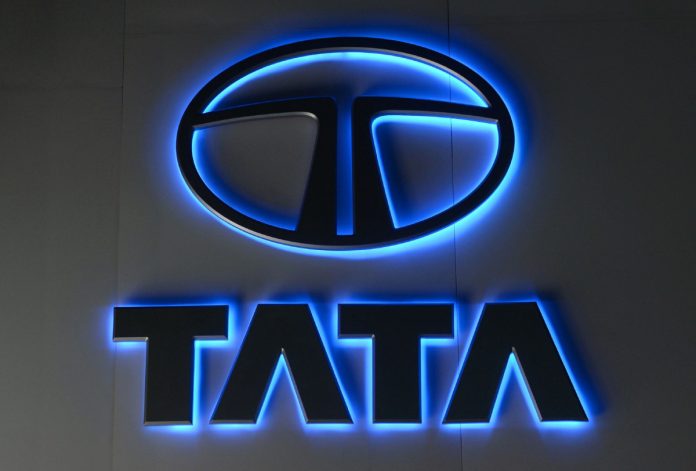
In this article, Amann Naqvi pursuing Diploma in Entrepreneurship Administration and Business Laws from NUJS, Kolkata discusses the need for stronger regulations in the automated and electronic trading market in India.
A critical review of the history of Tata group
Tata group was established in 1868, after more than half a century it has become one of the largest industrial empires of the world in various businesses:
- Hospitality
- Automobiles
- Steel
- Retail, and
- Jewellery etc.
Tata group is a huge conglomerate including hundreds of businesses, hence in the following article I have given a brief introduction of the Tata group:
- How it came into form, and
- Critically review the history of the Group through its recent acquisitions and the legal battles it has faced recently.
The Visionary
- Founder of Tata is Jamshetji Tata in 1868, and latter on it gained international recognition throughout the world after it bought several multinational companies. Today Tata is one of the world’s biggest companies with a combined market capitalization of 12 billion dollars.
- Father of Jamshetji owned a banking firm where Jamsetji gradually grew from apprentice to a skillful practitioner of the business arts under the tutelage of his father, and gain the knowledge about:
- Commodities
- Markets
- Trading
- Banking
- Before he started his own trading firm,
- He invested a capital of Rs21,000.
Cotton mill
In 1869 Tata moved into textiles, in Chinchpokli he acquired bankrupt oil mill in the industrial heart of Bombay, later on the property was converted into the cotton mill and renamed as Alexandra Mill. Two years later, he sold the mill for a significant profit to a local cotton merchant.
Weaving and Manufacturing Company
In 1874, a new venture was started by Jamsetji, the Central India Spinning which was a weaving and manufacturing company in Nagpur. He invested a capital of INR 1,50,000/- in Central India Spinning.
Express mills
- After three years, the Empress Mills came to be established in Nagpur. This can be considered as the main foundation of the Tata group as after this there was no looking back for the company which would go on to be valued at billions of dollars.
- The period following the foundation of Empress Mills witnessed a turn in Jamshetjis life, it came up to be one of his biggest and most bustling projects.
- From around 1880 to his death in 1904, Jamsetji was devoured by his three extraordinary thoughts for India:
- Setting up an iron and steel organization,
- Producing hydroelectric power, and
- Making a world-class instructive establishment that would mentor Indians in the sciences.
- All of them came to be true but only after his demise. One dream which came true for him was India to have a world-class hotel.
- In 1898 Jamshetji Tata opened a Hotel Taj in Mumbai, it was the first hotel of such standard in India and laid a foundation of a multimillionaire venture known to be as Taj Group of hotels. The first of its kind, with German fans and English butlers.
Tata Steel
- Ratan Tata (son of Jamshetji) established Tata Iron and Steel Company on August 26, 1907, and fulfilled the dream of Jamshedji [1]. By 1939 it operated the largest steel plant in the British Empire.
- The program was upgraded to 2 million metric tonnes per annum (MTPA) project and after a decade, the company employed around 40,000 people at Jamshedpur, and 20,000 in the neighboring coal mines in 1958.
- In 1971 and 1979, there were unsuccessful attempts to nationalize the company.[2]
- In 1990, it started expansion plan and established its subsidiary Tata Inc. in New York.
- In 2005 the company changed its name from TISCO to Tata Steel. [3]
Acquisitions Made by Tata Steel
- Tata Steel was one of the biggest producers of steel in India after SAIL. Till the earlier 21st century it was not on the top positions in the world of steel in terms of production around the world.
- The year 2004 and 2005 saw some of the biggest acquisitions made by Tata steel in its history of 100 years.
- It acquired NATSTEEL of Singapore and Millennium Steel of Thailand, both of them are now subsidiaries of Tata.
- The biggest acquisition by Tata was made on 31 January 2007, it won their bid from CSN for Corus after offering 608 pence per share, valuing Corus at £6.7 billion ($12 billion).
- Corus was 4 times larger than Tata steel at the time of acquisition but after it acquired the steel giant, it came on 5th position from the 56th position in the world of steel in terms of production and hence making its mark on the world map of steel.
- As on 31 March 2013, Tata Group held 31.35% shares in Tata Steel.
- An announcement of a plane by ThyssenKrupp in Germany and Tata Steel, to combined their European steelmaking businesses which would further structure assets as Thyssenkrupp Tata Steel, an equal partnership joint venture. The announcement estimated that the company would be Europe’s second-largest steelmaker in September 2017.[4]
Tata-Docomo conflict
- In 2009 Japan telecom giant DOCOMO acquired the 26.5% stake in Tata Teleservices. This was the first time Tata was venturing into telecom services, it was a great collaboration for both the companies but the collaboration did not last.
- In mid-2009, finishing right around a year and half of transactions, DOCOMO put $2.7 billion in wireless business, Teleservices (TTSL) on the understanding that if certain targets weren’t met in the next five years, the Tata would either discover a purchaser for the Japanese organization’s 26.5% stake at equitable esteem, or pay 50% portion of the first venture, whichever was higher. Those targets were:
- number of supporters and towers,
- money related breakthroughs like
- EBITDA, and
- Benefits
- It came as a shock to both the companies when Tata fared badly in the next five years and could not even earn half of the profits expected.
- By then, RBI had framed new rules that banned the exit by a foreign equity investor at an assured price. But this time the RBI also wanted to make an exception as it was the question of honoring a contract by an Indian company
- When DOCOMO submitted an exit proposal in 2014 to end its collaboration with Tata TeleService, subsidiary of Tata Sons and hence started a legal battle between the two companies. Telecom went to arbitration in the UK where it got the award in its favor. On June 24, DOCOMO won the ruling that ordered Tata Sons to pay it $1.3 billion to buy its stake in the mobile phone joint venture, Tata Teleservices.
- Japan’s largest telecom operator said in a statement the award was for Tata Sons’ breach of their shareholder’s agreement after it was denied exit of the loss-making Tata Teleservices at a pre-agreed price of half the original $2.7 .billion investment.
- After Tata had faced serious financial issues because of its telecom venture it finally decided to exit from the telecom field hence selling it to Airtel at throw away price. DOCOMO approached the Delhi High Court for the enforcement of its award.
- If we review Tata’s performance in the telecom venture, we can see the biggest failures in the company’s long history of more than a century.
- Cyrus Mistry could have put strict allegations of handling the Tata-DOCOMO collaboration on his own or without the knowledge of Tata Sons board. Though Cyrus Mistry has continuously denied such allegations.
Tata v. Mistry (Conversion to a Private Limited Company)
Tata Sons were registered as a private limited company in 1917. After the Companies Act 1956 it was termed as a deemed public holding company with articles remaining unchanged.
Last year a general board meeting of Tata Sons was held where the majority has contended that now the conversion of Tata Sons should take place from being a public holding company to a private limited company.
The application has been filed at NCLAT. NCLAT may not give the ruling in its favor or it may not allow the conversion from a public company to a private limited company, if the conversion is not in the interest of the company.
Also, the Mistrys have written to the group against the conversion.
Conclusion
By the end of the review, the author feels Tata has had a rollercoaster ride throughout, from successful mergers, witnessing failed collaborations to losing bitter legal battles Tata has seen it all, with now the original chairman being back all we can do is hope for a better future for the Tata group. Also if the company now becomes Pvt Ltd. Again it would be in favor of the Tata’s but can go against the Mistry family as it would be allotted shared discriminately.
References
[1] Indian Steel Industry History, First Steel Plant in India. tatasteel100.com. Retrieved 30th January 2018
[2] History of Tata Iron & Steel Co. Ltd. FundingUniverse.com. Retrieved 28th January 2018
[3] TISCO to change its name to Tata Steel Ltd. Financial Express. 19 May 2005. Retrieved 31 August 2013.
[4] Turner, Zeke; Patterson, Scott (20 September 2017). Thyssenkrupp, Tata Seal Long-Awaited European Steel Deal”. The Wall Street Journal. New York City, New York, United States. Retrieved 21 September 2017.









